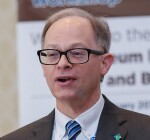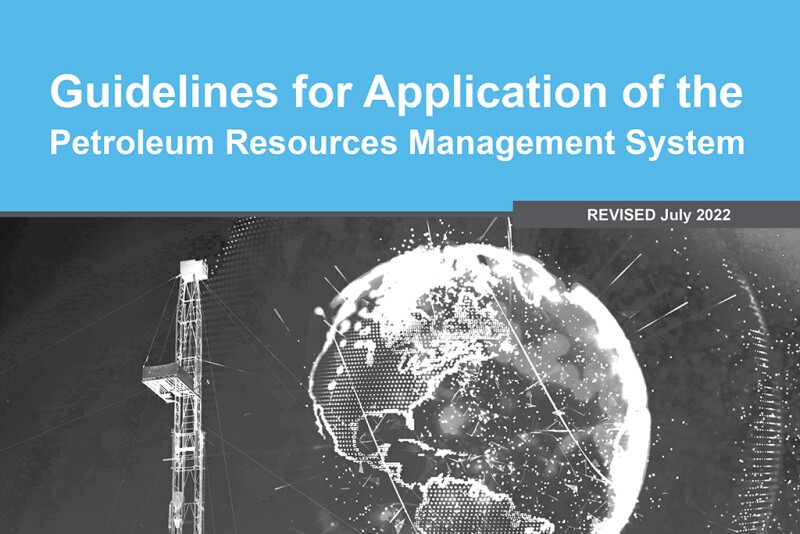The Petroleum Resources Management System, or PRMS, has long been recognized as the global standard reference for resources and reserves classification and definition. The PRMS, although first designated as such in 2007, had been in existence in various forms since SPE assumed responsibility for codifying reserves definitions in 1965. As the industry evolved, the SPE-sponsored guidelines have been contemporized in an ongoing fashion ever since.
The PRMS was updated most recently in 2018, spearheaded by the SPE Oil & Gas Reserves Committee (OGRC) through a collaborative endeavor with the Society of Petroleum Evaluation Engineers (SPEE), the American Association of Petroleum Geologists (AAPG), the Society of Exploration Geophysicists (SEG), the European Association of Geoscientists and Engineers (EAGE), the Society of Petrophysicists and Well Log Analysts (SPWLA), and the World Petroleum Council (WPC).
In response to the 2000 edition of the document, a companion volume entitled Guidelines for the Evaluation of Petroleum Reserves and Resources was published in 2001 through the efforts of SPE, AAPG, and WPC. The Guidelines publication was a welcomed addition, providing further clarification and discussion of the principles.
After the introduction of the much-expanded PRMS in 2007, the need for a revised Guidelines document was clear. Public comment had asked for more example applications, and so the new version accommodated the request and further was renamed the Guidelines for Application of the PRMS (commonly referred to as the “AG”) as published in 2011.
Prompted by the 2018 PRMS, a modernized AG was incumbent upon the OGRC and the co‑sponsoring societies.
Review Process
The new AG subcommittee was formed with an OGRC member as the project lead in early 2019. Chapter chairs were invited, many of whom were subject matter experts from the co-sponsoring societies, and each chapter chair assembled their own team of experts for the development of material and new example application situations.
Each chapter draft was reviewed at least nine times with the help of the six-member OGRC Steering Committee, the general OGRC membership, the co-sponsoring societies, the other chapter chairs, the project lead, and the SPE technical editors. The entire process took just over 3 years. To ensure consistency and continuity of progress, the same project lead oversaw all activity from the beginning to end of the process.
Features of the New AG
From the outset, the new AG was designed to incorporate the following five features.
- New chapters. There are new chapters on “Petrophysics” and “Reservoir Simulation,” which are extremely important domains that have become even more salient since the 2011 AG. The chapter on petrophysics was considered especially important due to the first-time inclusion of the phrase “net pay” in the 2018 PRMS.
- Expanded scope. In addition to new chapters, the revised chapter on “Unconventional Resources Estimation” presents the current best practices for the analysis of these challenging reservoirs, the assessment and evaluation of which had changed dramatically since the 2011 publication. The chapter includes numerous illustrative example applications for the user’s benefit.
- Additional examples. Numerous example applications have been added to all chapters.
- Cross-referenced chapters. The material in one chapter integrates with similar material in other chapters, with many cross references between the chapters to present consistency of interpretation and application.
- Revised glossary. The new AG includes definitions from the 2018 PRMS plus terms presented only within the AG itself. This includes terminology related to seismic interpretation, which was lacking in the 2011 version.
The 2022 AG is not merely a refresh of the 2011 AG, but a complete rewrite by contemporary subject matter experts.
Conclusion
The new AG was presented to and approved by the SPE International Board of Directors in July 2022. At that meeting, the Board asked about ongoing updates. In response, the project lead and the OGRC chair proposed that the document be refreshed and added to as necessary, applying the same versioning approach being used for the PRMS. Additional topics and chapters are being considered already.
The 2022 Guidelines for Application of the Petroleum Resources Management System (PRMS) is available for purchase here. Mark your calendar for a live Web event on 5 January 2023. Charles Vanorsdale and moderator Steve McCants will present background on the history of, and the need for, resources definitions and their application, with a brief overview of the updates between the 2007 and 2018 versions of the PRMS. A more thorough discussion will highlight the redesign of the Application Guidelines relative to its prior edition, with emphasis on its major updates, example applications, and new terminology.
Acknowledgment
The project lead extends his gratitude to Chapter chairs Ron Harrell, Rich DuCharme, Richard Xu, Danilo Bandiziol, Luis Quintero, Miles Palke, Carolina Coll, Bill Haskett, Charles Vanorsdale, Dilhan Ilk, Mohammed Alshaikh, and Monica Clapauch Motta. SPE OGRC chairs Steve McCants (2018–2020) and Dan Olds (2020–2022). SPE OGRC Steering Committee members Dan Olds, Dan DiLuzio, Bernard Seiller, John Lee, Rawdon Seager, and Steve McCants. SPE OGRC Examples Subcommittee members Elliott Young and Dan DiLuzio. Co-sponsoring societies: AAPG, EAGE, SEG, SPEE, SPWLA, and WPC. SPE International Board of Directors and SPE staff.
Charles R. Vanorsdale recently retired from Saudi Aramco, where he had been a senior petroleum engineering consultant in the upstream development strategy and reserves department. In his 15 years at Aramco in Dhahran, he ensured compliance with PRMS guidelines in the annual reserves reporting process and was a key player in Aramco’s 2019 initial public offering. Prior to Aramco, he had been brought onboard at El Paso Corporation to bring their coalbed methane reserves in compliance with the US Securities and Exchange Commission rules. Vanorsdale has been focused on reserves assessment and guidelines since 1980 when he joined an international consulting firm. His career has spanned over 40 years, starting with Getty Oil Company in the late 1970s. He served on the SPE Oil & Gas Reserves Committee from 2017 to 2021 and on numerous other SPE committees since 1989. A registered professional engineer in the states of Texas and Oklahoma, he holds a BS in petroleum engineering and a master’s of engineering management degree, both from the University of Tulsa.

